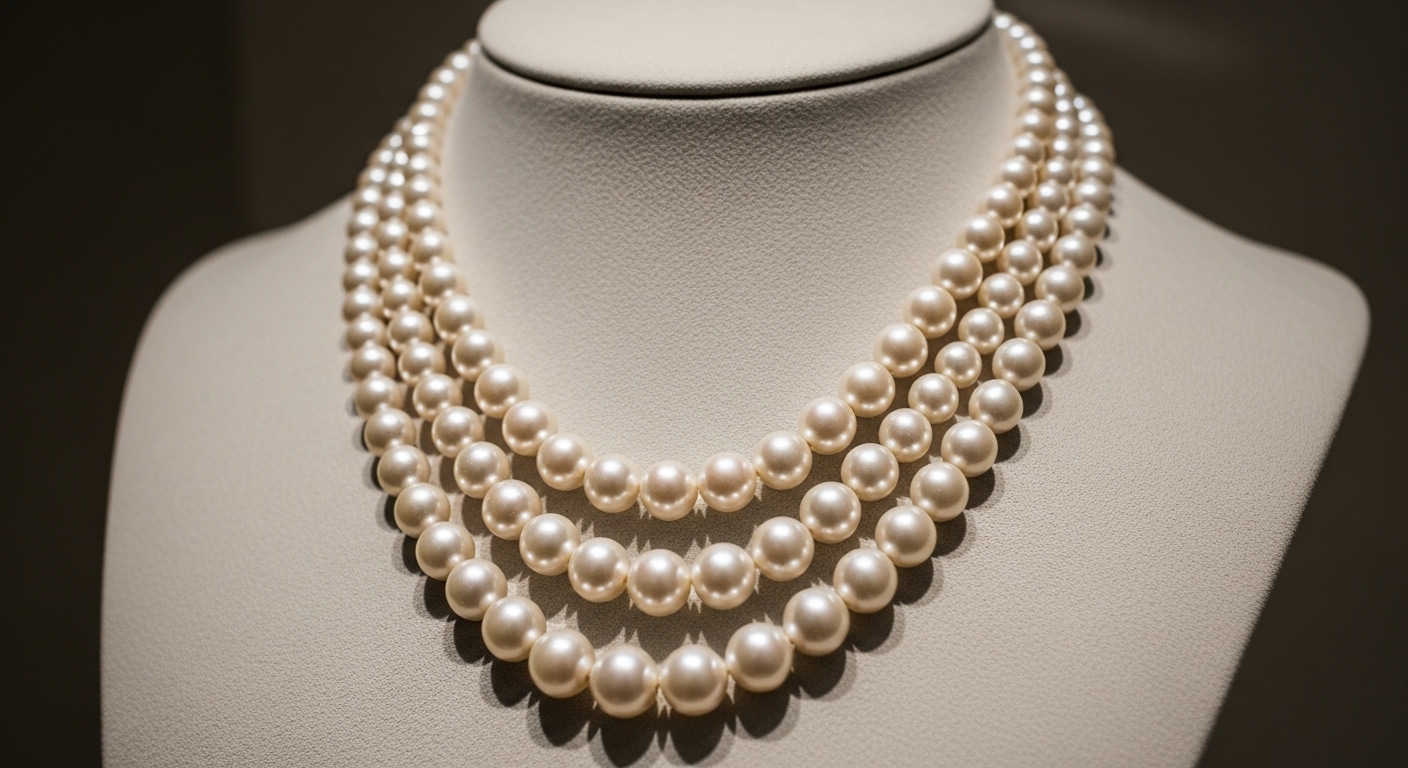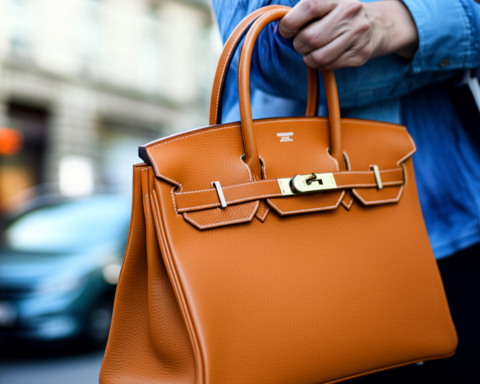How a Three-Strand Necklace Became a Global Symbol of Elegance, Power, and Quiet Revolution
When Jacqueline Lee Bouvier Kennedy stepped into the White House in 1961, she didn’t just become the First Lady; she became a global arbiter of style, her every sartorial choice scrutinized, admired, and emulated. Among her signature accessories – the pillbox hats, oversized sunglasses, and impeccably tailored Oleg Cassini suits – one item stands out for its enduring charm and symbolic weight: her ever-present three-strand pearl necklace. This wasn’t merely a piece of jewelry; it was a masterstroke of personal branding, a symbol of accessible elegance, quiet strength, and a subtle yet profound fashion revolution that continues to resonate today.
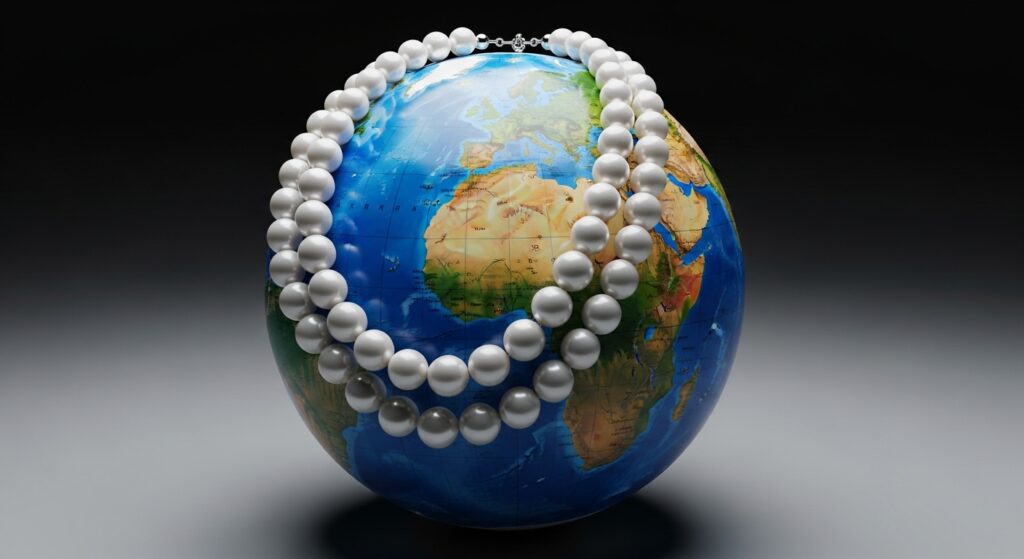
A New Era of Style: The “Jackie Look” Takes Hold
The Kennedy era, often mythologized as “Camelot,” promised youth, vigor, and a new vision for America. Jackie Kennedy, at just 31, was central to this image. She consciously moved away from the more matronly styles of previous First Ladies, cultivating a look that was sophisticated, modern, and refreshingly youthful. Working closely with French-born American designer Oleg Cassini, her officially appointed couturier, she crafted a wardrobe that was both uniquely American and internationally chic.
Her influence was immediate and immense. Women across the globe sought to capture the “Jackie Look,” which emphasized clean lines, structured silhouettes, vibrant block colors, and a refined, understated approach to accessorizing. The pearl necklace became an indispensable element of this carefully curated image, a constant in a wardrobe that exuded both formal grace and an approachable, modern sensibility.
The Pearls in Question: Real, Faux, and Fabulously Famous
A common question that arises is whether Jackie Kennedy’s famous pearls were real. The answer is nuanced. Jacqueline Kennedy Onassis certainly owned valuable fine jewelry, including a diamond Rivière necklace from her second husband Aristotle Onassis and family heirloom pearls. However, the iconic three-strand necklace most frequently associated with her First Lady years, the one that became a global sensation, was often high-quality costume jewelry.
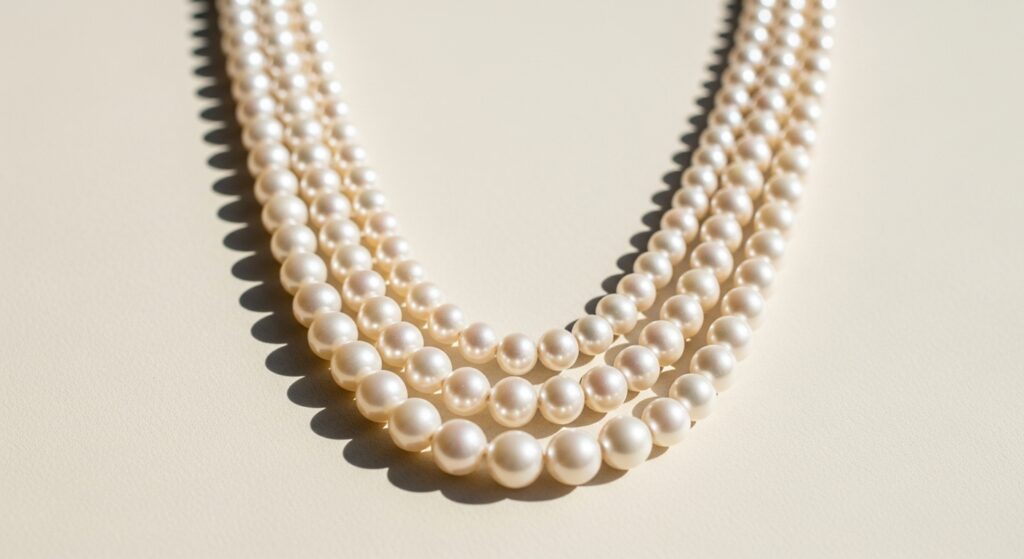
One of her most photographed and beloved sets was a simulated pearl necklace made from glass beads, attributed to the renowned costume jeweler Kenneth Jay Lane. These were not inexpensive trinkets but expertly crafted pieces designed to mimic the luster and weight of genuine pearls. Jackie reportedly owned several such necklaces. The decision to wear faux pearls was multi-faceted:
- Accessibility & Practicality: Costume jewelry was more practical for frequent public appearances and travel, mitigating security concerns.
- Versatility: It allowed her to have multiple sets to complement various outfits without the astronomical expense of numerous genuine pearl strands of that size and quality.
- A Democratic Touch: In an era before relentless celebrity close-ups and social media scrutiny, high-quality faux pearls could easily pass for real to the general public. By embracing them, Jackie subtly projected an image of attainable elegance, suggesting that style was more about taste than exorbitant wealth.
The Signature Three Strands: Anatomy of an Icon
The quintessential “Jackie Kennedy pearl necklace” typically consisted of three strands of perfectly matched, individually knotted glass pearls, often with a sophisticated clasp. She wore them with an effortless grace, whether paired with a formal evening gown for a state dinner, a chic Chanel-style suit for an official engagement, or even more casual daywear.
The necklace perfectly framed her face, complementing her signature bouffant hairstyles and drawing attention to her elegant neckline. It added a touch of luminosity and refinement to every ensemble, becoming an instantly recognizable hallmark of her style. Its consistency was key; it was a familiar, reassuring element that anchored her diverse wardrobe.
More Than Adornment: Symbolism and Quiet Power
Jackie Kennedy’s pearls were far more than a fashion statement; they were imbued with symbolic meaning:
- Timeless Elegance and Poise: Pearls have long been associated with classic beauty, grace, and sophistication. Jackie amplified these connotations, using her necklace to project an image of unwavering poise and refined femininity.
- Quiet Strength and Composure: In the high-stakes, male-dominated world of global politics, her polished and consistent appearance, epitomized by the reliable presence of her pearls, conveyed a sense_of calm, control, and unshakeable composure. It was a form of “soft power,” projecting strength through grace.
- A Modernized Image of a First Lady: Her youthful, sophisticated style, with the pearls as a constant, subtly revolutionized the image of the First Lady. She was not just a hostess but a cultural ambassador, and her fashion choices played a significant role in shaping America’s image on the world stage.
- Approachable Glamour: While her overall look was aspirational, the (often faux) nature of her famous pearls made that specific element of her style feel more democratic and attainable to the average woman.
The Ripple Effect: Imitation, Inspiration, and Enduring Legacy
The impact of Jackie Kennedy’s style, and her pearls in particular, was immediate and widespread. Stores quickly began stocking three-strand faux pearl necklaces, and they became a must-have accessory for women seeking to emulate her sophisticated look. This trend wasn’t fleeting; the “Jackie O pearls” (as they also became known after her marriage to Aristotle Onassis) solidified their place as a classic wardrobe staple for decades.

Even today, the three-strand pearl necklace remains a benchmark of elegance. It’s frequently referenced in fashion, worn by public figures, and continues to be a popular choice for women seeking a touch of classic, polished style. Designers still draw inspiration from her iconic look, and vintage pieces from the 1960s, or high-quality reproductions, are sought after by collectors and fashion enthusiasts alike.
The Irony: “Fake” Pearls, “Real” Cultural Significance
One of the most fascinating aspects of Jackie Kennedy’s pearl legacy is the irony surrounding their material versus their cultural value. A set of her faux pearls by Kenneth Jay Lane, which reportedly cost around $200 in the 1960s, famously sold for $211,500 at a Sotheby’s auction of her estate in 1996. This staggering price had little to do with the intrinsic value of the glass beads and everything to do with their provenance – they had graced the neck of one of the 20th century’s most admired women.
This highlights a profound truth: the cultural significance and iconic status of these “fake” pearls made them infinitely more “real” and valuable in the public imagination than many genuine jewels. They became a testament to the idea that true style transcends monetary worth and that an object’s power can be derived from its story and its association with an extraordinary individual.
Why Still a Touchstone of Elegance?
Decades after her time in the White House, Jackie Kennedy Onassis remains an unparalleled style icon, and her pearl necklace a persistent symbol of grace. Its enduring appeal can be attributed to:
- The Power of Association: The pearls are inextricably linked to Jackie’s universally admired persona – her intelligence, dignity, and exquisite taste.
- Intrinsic Classicism: Pearls themselves possess a fundamental, enduring elegance that transcends fleeting trends.
- Versatility: The three-strand necklace remains a remarkably versatile accessory, capable of elevating both formal and more casual attire.
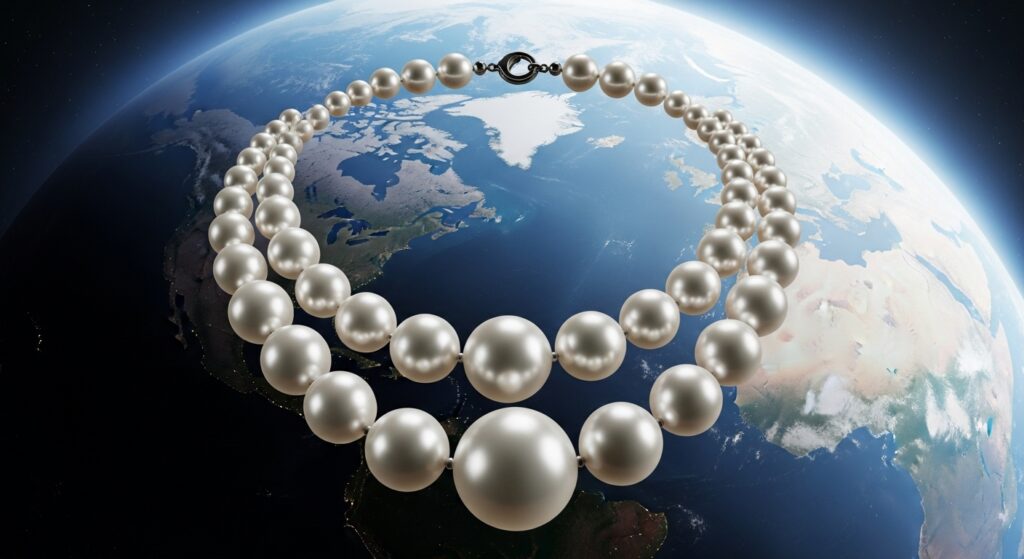
In conclusion, Jackie Kennedy’s three-strand pearl necklace was a carefully chosen, brilliantly deployed element of a meticulously crafted public image. It was a symbol not just of her personal style but of an era, representing a blend of accessible glamour, quiet strength, and a modern vision of American elegance. More than just an accessory, it was a statement, a silent revolution in pearls that cemented its place in fashion history and continues to define a certain kind of enduring, sophisticated grace.
